This week, as many families with school-aged children are wrapping up another busy week, let us pause and recognize the struggles undertaken by many parents who have become acquainted with their children’s “new math,” which often feels quite foreign to how we learned to do math. After looking at the following examples of student math books from the early 19th century, you may find yourself even more perplexed as to what the best methods should be.
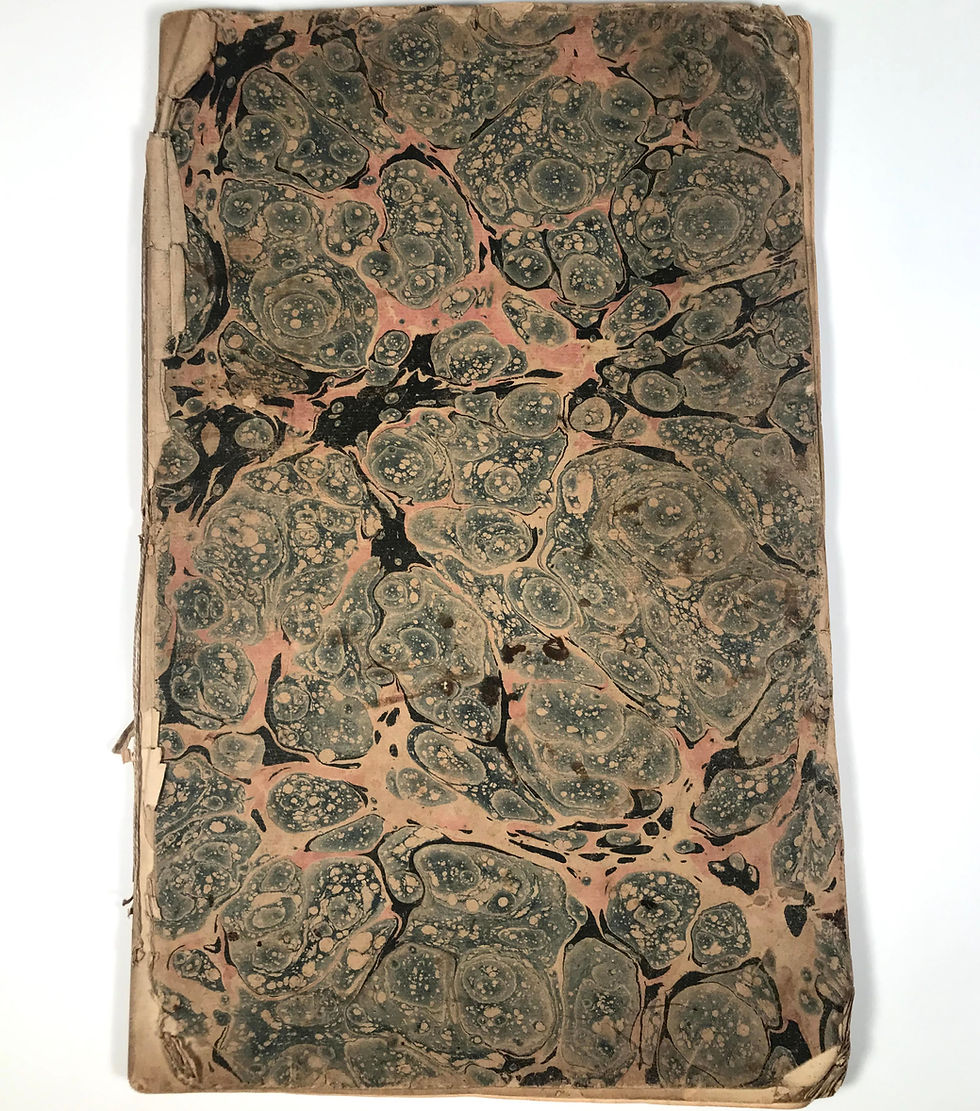
Marbled cover of Ebenezer Bliss' Math Copybook
Book measures approximately 13" x 9"
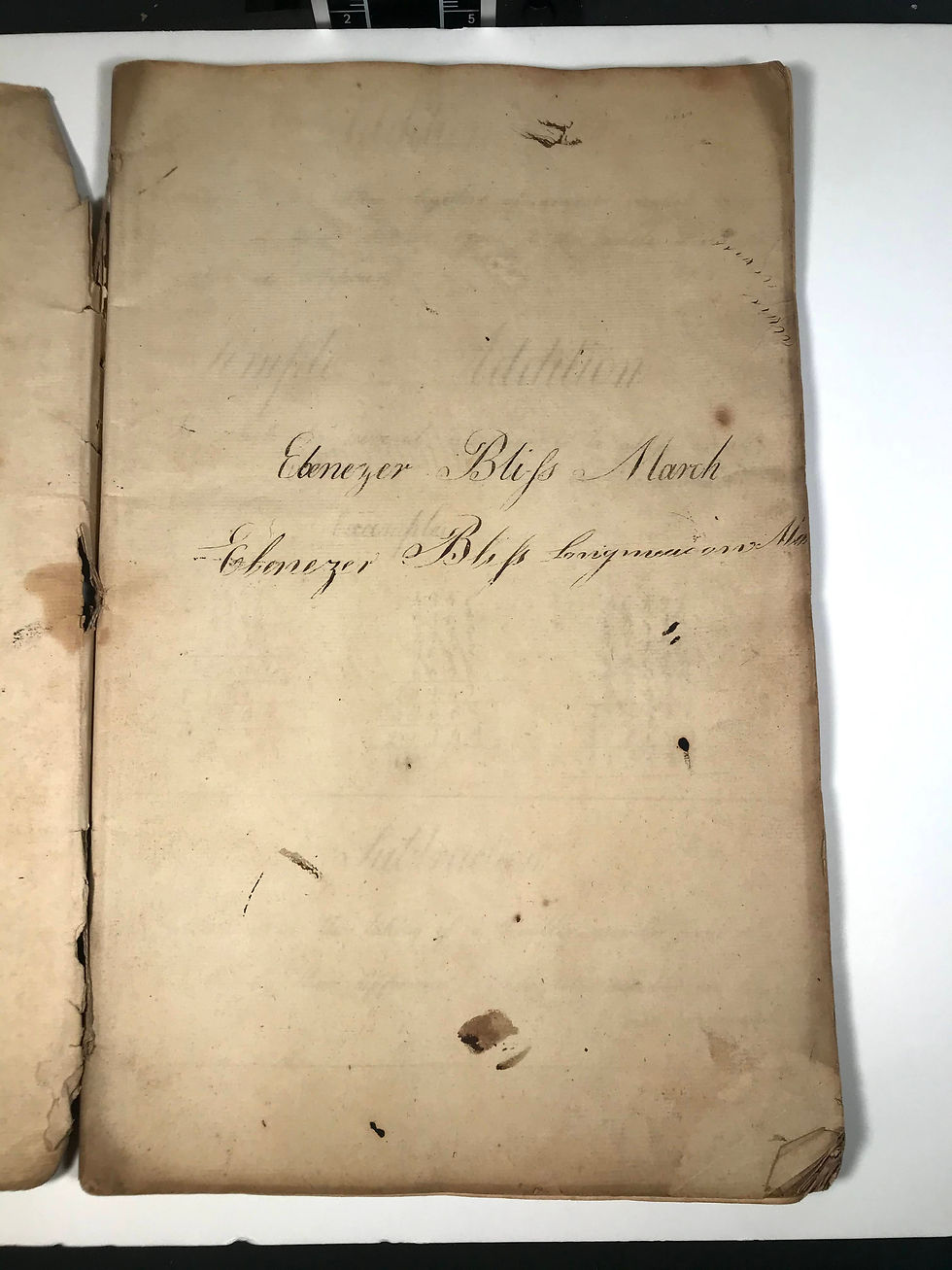
Ebenezer Bliss- Longmeadow
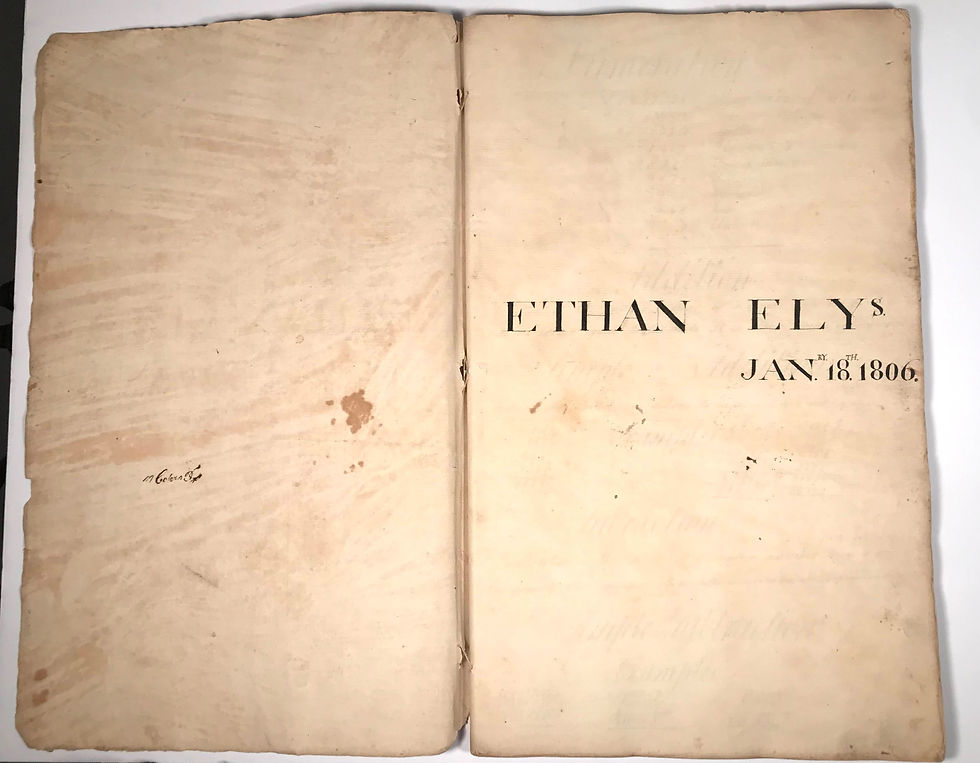
These two copybooks from the archives of the Longmeadow Historical Society are true marvels of “old math.” One c. 1810 belonged to Ebenezer Bliss (1795-1868) and the other dated 1806 belonging to Ethan Ely (1791-1875) - both of Longmeadow. The beautiful artistry of the penmanship aside, young Mr. Bliss and young Mr. Ely used their copybooks to collect and demonstrate their understanding of mathematical concepts that must have been taught in their Longmeadow District Schools in the first decade of the 19th century. They begin simply enough with addition - defining the concept and giving examples. Then they move through subtraction, multiplication, division. They then move onto applying these techniques to “Federal Money.” This is followed by the measurement terms and related math of a variety of items such as Time, Land, Solids, Wine, Bee & Ale, and Cloth. They progress through “Vulgar Fractions” and Decimals and into the important business of calculating Interest and even the math of Bartering. No algebra or calculus is included - just the type of math that would benefit the new nation’s farmers and merchants and other ordinary citizens.
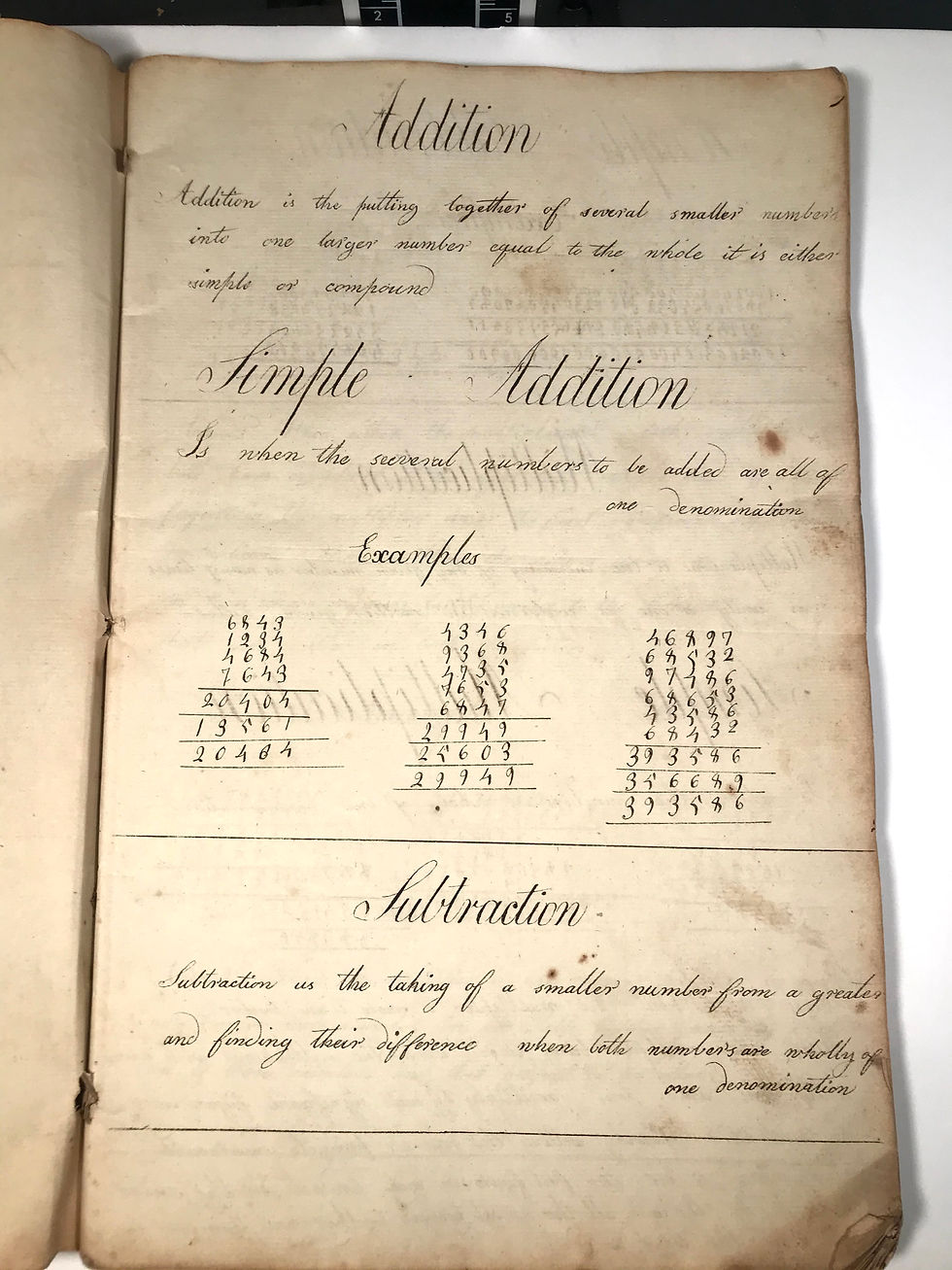
"Addition is the putting together of
several smaller numbers into one larger number"
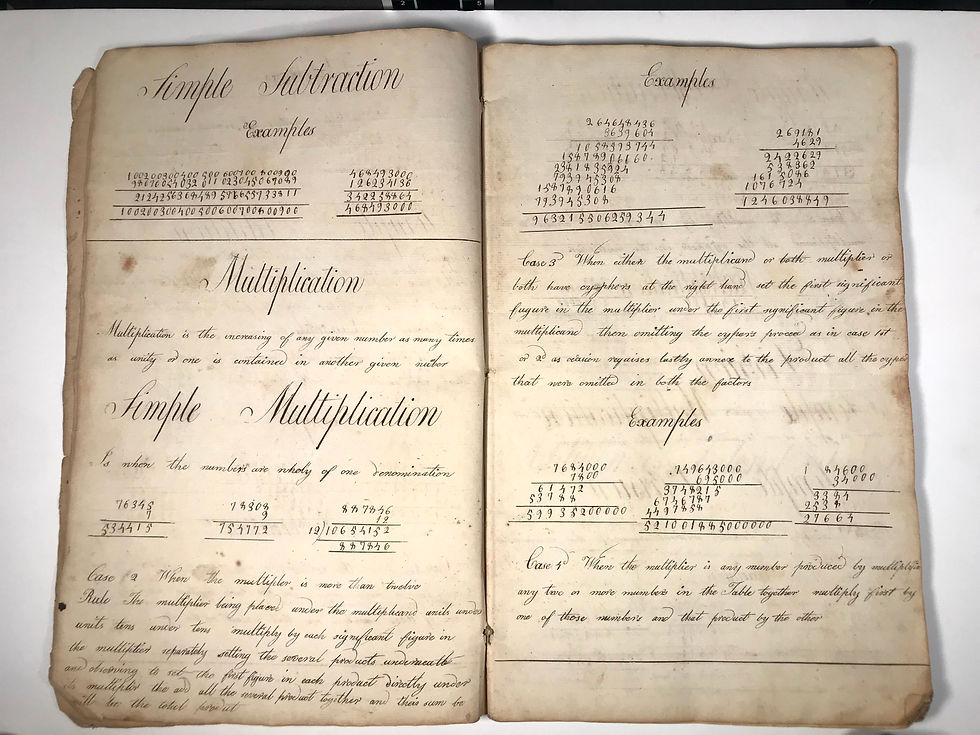
Definitions and Examples of Simple Subtraction and Simple Multiplication
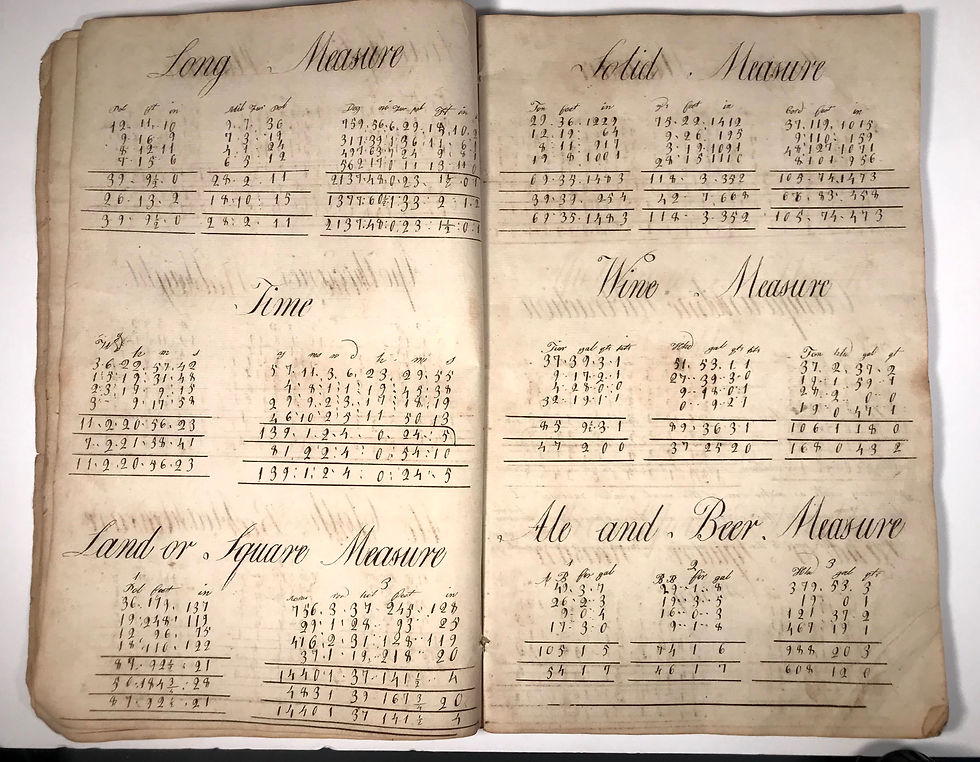
Measurement Work
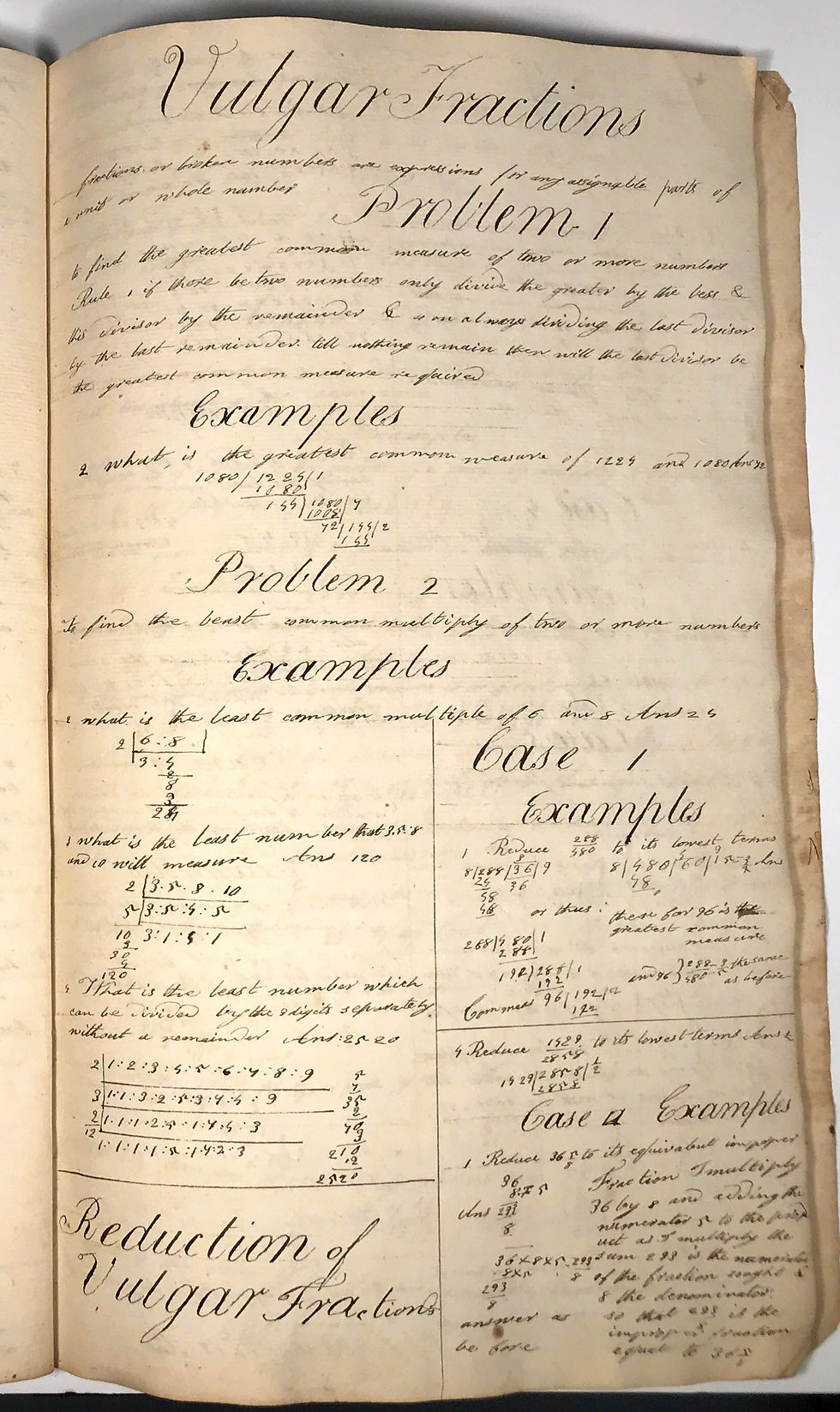
Vulgar Fractions ... indeed!
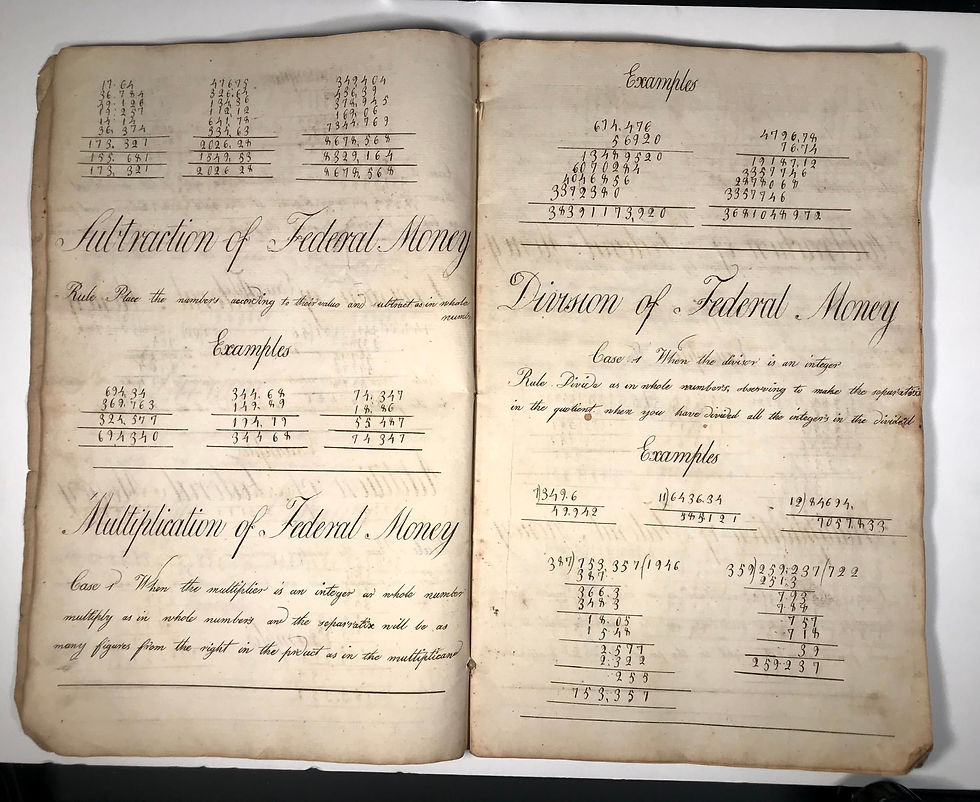
Work with Federal Money math
Both copybooks beautifully display the firm grasp each scholar had on the material. They must have been proud of their work to save these paper mementos of their school days.
The word problems in Bliss’ book are striking reminders of the pride the nation felt in its recent triumph over the British: “General Washington was born in 1732. What is his age in 1787” (answer: 55 Ans). It is followed by “The Massacre at boston (sic) by the British Troops happened March 5th 1770 and the Battle of lexington (sic) April 19th. How long between April 19th 1775 March 5th 1770” (answer: 5yr 1m 15d)
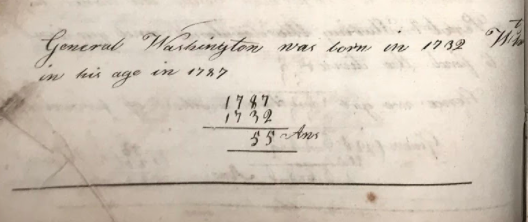
General Washington example from Ebenezer Bliss' book
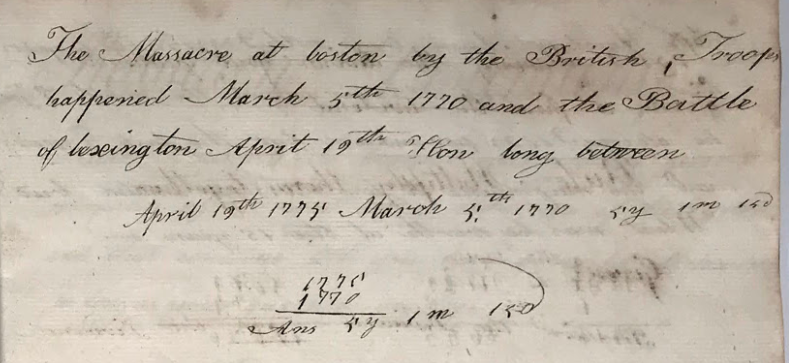
Revolutionary War timeline example from Ebenezer Bliss' book
The language and organization of both books indicates that they are modeled on a popular Math textbook of the time called, “Arithmetick, Both in Theory and Practice” by John Hill. The preface of the book proclaims, “It appears to me, upon the Perusal of it, to be a curious piece: ‘Tis clean, methodical, and handsomely dressed: so plain, that the dullest person may learn by it; and so compleat, that he need learn no more.”
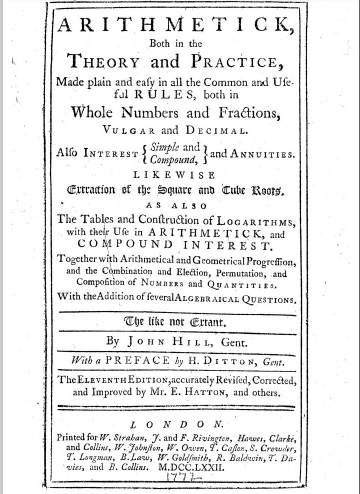
We hope you enjoy a peek into these early 19th century school day relics from our archives.
Contributed by Melissa M. Cybulski, Longmeadow Historical Society Board Member
Originally published May 20, 2021
Comentarios